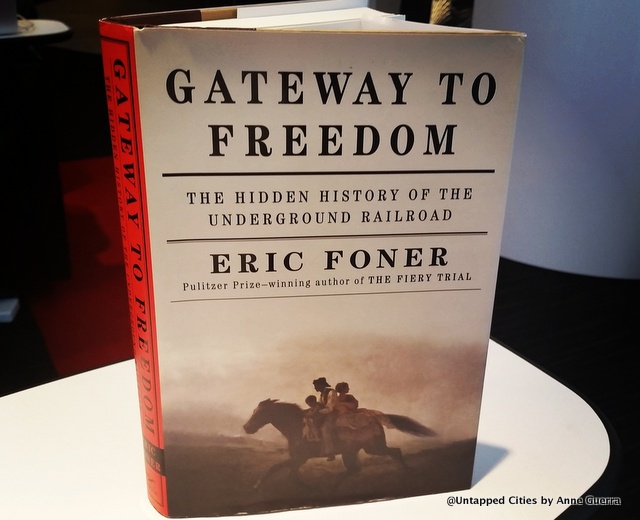
Last night, the Museum of the City of New York hosted the discussion of historian Eric Foner’s new groundbreaking book, Gateway to Freedom: The Hidden History of the Underground Railroad. The discussion was led by Martha Hodes, another leading historian in the field of 19th century America and slavery.
Foner started the conversation by comparing the process of writing about the Underground Railroad, and especially New York City’s involvement, to trying to complete “a jigsaw puzzle with many pieces missing.” He explained that historians often formulate a question about a particular subject and then find the documents needed to answer that question. His experience with Gateway to Freedom was unique in that he found a document and then started asking questions.
That document, an account book of Sidney Howard Gay, a New York journalist and abolitionist, was found buried in the archives of Columbia University’s library by a student of Foner’s. The account book appeared to hold a registry of fugitive slaves passing through Gay’s office during the 1850s. While the document was primarily used as a form of bookkeeping, Gay also interviewed the slaves passing through, creating a collection of extremely rare and anonymous accounts of fugitives on their trek to freedom.
 Map of New York City’s key Underground Railroad sites. Image from “Gateway to Freedom.”
Map of New York City’s key Underground Railroad sites. Image from “Gateway to Freedom.”
New York City’s involvement in the Underground Railroad is complex. While the city was a stop for many fugitives on their way further north, it was actually quite a hostile environment for blacks. In fact, New York was one of the last northern states to abolish slavery and only one third of New York City voted for Lincoln. This information becomes slightly less surprising when you consider New York’s financial ties to slavery. Many of the city’s prominent banks and industries, including JP Morgan Chase, Bank of America and New York Life, profited from bankrolling the institution and cotton production.
 Zoomed in version of map.
Zoomed in version of map.
Although there was a thriving free black community in New York City, many still lived in fear of being captured by both police officers and slave catchers. Most fugitives did not linger around the city for very long. Free blacks made up the majority of the Underground Railroad network in the five boroughs, with people like Gay as the exception. Most of the networking took place downtown, on the docks and slips of the lower Manhattan. Foner’s book includes a map of the Underground Railroad sites throughout the city.
To order Gay’s book, click here. Next, read about the 10 spots on New York City’s Underground Railroad and learn more about the secrets of New York’s slave market.






